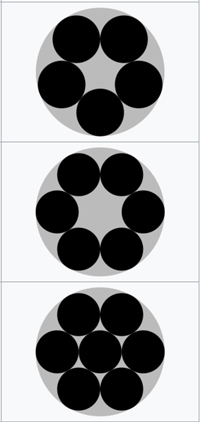Making soufflé tonight, I wondered if the six yolks took on the optimal circle packing configuration. They do not. It is only with seven congruent circles that the optimal packing places one in the center.
Q. Why don't the yolks in a bowl follow the optimal packing of congruent circles in a circle?

Six yolks in a bowl.

Image from Wikipedia. Optimal packings for $5,6,7$ circles.
